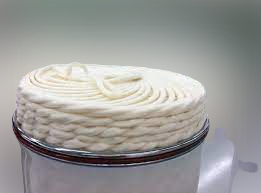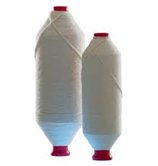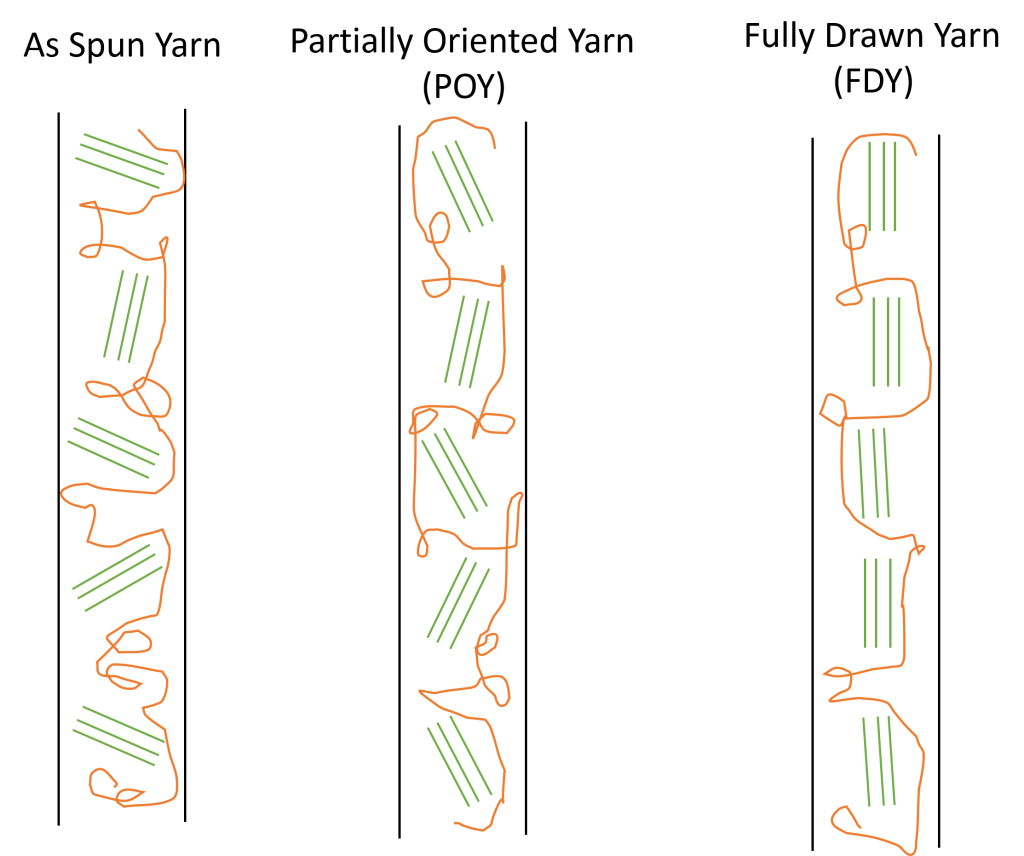We have already covered different textile manufacturing processes. We also know what textile fibers and their different types are. Yarn is the first intermediate product that can be made from different types of fibers. But what is yarn and how it is made? Yarn can be defined as a linear strand or assembly of fibers in which fibers are arranged in a specific helical conformation. This conformation is usually achieved by twisting the fibers together on a yarn manufacturing machine. However, various yarn manufacturing processes can be used to make yarn.
Before going into the details of different yarn manufacturing processes, let us recall our knowledge of different types of fibers. Fibers can be either staple fibers or filament fibers. Yarn can be made either from staple or filament fibers or even both types of fibers can be combined in a single yarn. Therefore, depending on the type of fiber, yarn can be either staple yarn or filament yarn. Filament yarn is mostly made directly while the filament is produced using any of the filament spinning techniques such as melt spinning, wet spinning or dry spinning, or dry jet wet spinning. In this post we will cover the manufacturing of staple spun yarn, that is, yarn made of staple or short fibers.
There are different spinning or yarn manufacturing techniques or processes used to manufacture staple yarns. Technologically, these yarn manufacturing processes are broadly categorized into two categories which are further subdivided into various subcategories as shown below:

There are various other relatively less famous yarn manufactirng techniques, however, the above mentioned are most commonly used.
In each of the above yarn manufacturing techniques, fibers pass through a series of processes to be converted finally into yarn. In all these yarn manufacturing processes, fibers are first converted into a sliver which is further processed and converted into yarn gradually. The conversion of slivers into yarn is different in each of the above yarn manufacturing processes. The name of these yarn manufacturing processes is derived from the principle used to convert the last intermediate product into yarn. The sliver is a thick strand of fibers that is the first intermediate product before being converted into yarn and is shown in the figure below:

A brief introduction to each of the above processes is given in the following section.
Ring spinning process
Ring spinning is by far the most widely used yarn manufacturing process worldwide. This process is flexible enough to manufacture a variety of different yarn counts ranging from very coarse or thick to very fine or thin yarns. In this process, the sliver is first converted into another intermediate product known as roving made on roving frame machine, also known as simplex machine. Roving is a thin strand of fibers, thinner than a sliver, having a slight twist to give an appropriate strength to the strand for further handling and processing purposes and is shown below:

The roving is then taken to the ring frame machine to convert it into yarn of desired thickness or count. Theoretically, the formation of roving is not a compulsory requirement but technically it is needed to help ring frame in two aspects:
- Conversion of thick slivers into thin yarn requires a high level of draft which is beyond the limit of the ring frame machine. The process of attenuation of the strand of fibers into a thinner strand is known as a draft. Thus, the roving frame shares the burden of the draft of the ring frame by giving almost half of the draft on the roving frame.
- Sliver cans consume a lot of floor space which is not available in the creel area of the ring frame machine.
The comparison of thickness of sliver, roving and yarn is shown in the following figure:

It is because of this ring frame machine due to which the process is known as the ring spinning process. Ring spinning process consists of a series of sub-processes that convert raw materials such as cotton or other natural or synthetic staple fibers into yarn. Two variations of these processes are important that are used to manufacture either carded yarn or combed yarn.
Combed yarn is a yarn for which the process of combing has been performed. In the combing operation, short fibers are removed so that high-quality yarn can be made from long fibers. On the other hand, carded yarn is a yarn for which the process of combing has not been performed. It should be noted that the combing process is performed for cotton and not for synthetic fibers. This is because, being a natural fiber, cotton fibers have variation in length whereas synthetic fibers can be made of any length. Details of carded and combed processes will be covered in separate posts.
Open End Spinning Techniques
Open end spinning techniques such as rotor spinning, air vortex spinning and friction spinning etc. are relatively newer yarn spinning techniques compared with ring spinning. The name “open end” derives from the fact that the point where fibers are converted into yarn or the yarn end where yarn formation takes place is not gripped and is left open. In these spinning techniques, the fibers are directed to a rotating yarn end so that they become part of the growing yarn end due to the twists imparted by the rotating yarn end. The device or principle used to rotate the open yarn end of the yarn gives the origin to the name of these spinning processes.
Open end spinning processes offer the advantage that their production rate is much higher compared with ring spinning process and the process is also shorter which reduces the cost of the yarn produced through open ended processes. However, the disadvantage of the open end spinning techniques is that only coarser or thicker yarn counts can be produced. Generally, yarn counts finer than 60 Ne (English cotton count) cannot be produced using open end spinning. A brief introduction to these spinning processes is given in the following section.
Rotor spinning
After ring spinning, rotor spinning is the second most widely used process for yarn manufacturing. In rotor spinning, the sliver produced on the draw frame machine is directly fed to the rotor machine where it is directly converted into yarn and finally wound on the package in the form of a cone. Unlike ring spinning, roving is not formed which shortens the yarn manufacturing route and reduces the cost of the rotor spun yarn. The process involves feeding the sliver to the machine, opening the sliver into individual fibers by the opening roller, transporting the fibers to the rotor, forming yarn within the rotor, drawing, waxing and winding the yarn to make the final package in the form of a cone.
Air vortex spinning
Air vortex spinning is the second most important and widely used open end process for yarn manufacturing. A stream of air is used to rotate the growing end of the yarn which catches the incoming fibers and binds them by twisting to the growing yarn end. In air vortex spinning, a sliver is fed to the drafting system of the air vortex machine, fibers are sent to a nozzle after giving the required draft where an air stream rotates them to bind them to the yarn end. Air vortex spinning has higher production rates compared with both rotor and ring spinning systems.
Friction spinning
In friction spinning, yarn is formed by friction in the convergent region of the two oppositely rotating drums and is, therefore, known as friction spinning. The draw frame sliver is fed to the machine and is opened to individual fibers just like the rotor spinning. The opened fibers are guided to the convergent region of the two oppositely rotating drums where individually opened fibers are collected back to form the required yarn count. The fibers become part of the growing yarn end within this region. The open yarn end is rotated due to friction between the two drum surfaces.
A brief description of various yarn manufacturing processes is given above. The yarn produced using different yarn manufacturing techniques possesses different yarn structures and hence exhibits different properties. The detailed discussion of each of these systems and the structure and properties of the yarns produced using them will be covered in separate posts.


This is a very informative and well-researched article! The points about different spinning method were explained very comprehensively, especially air vortex and friction spinning. The use of spinning cans in these processes is paramount. Great job!
MK Textiles Corp,Explore MK Textile Mills, a cornerstone of Pakistan’s textile industry known for its commitment to quality and innovation. With a rich heritage and cutting-edge manufacturing facilities, MK Textile continues to lead the sector, offering a diverse range of premium fabrics and setting industry standards for excellence. For More Information Visit MK Textile’s Official Website